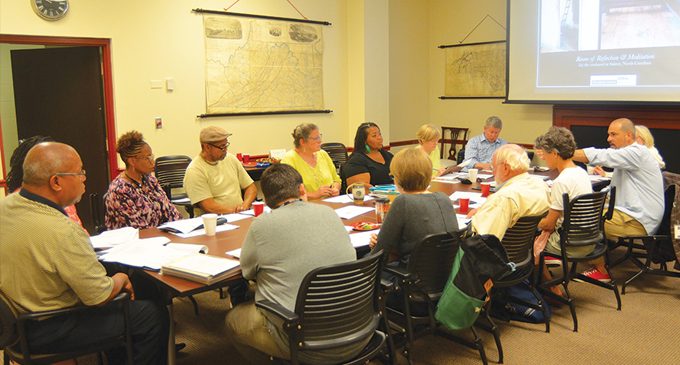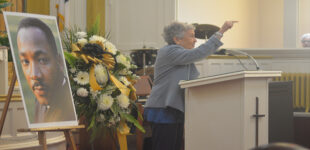Old Salem’s enslaved and free Africans come to light
The Hidden Town Project Committee

This is the first of a three-part series.
Before Old Salem was restored and turned into one of the most highly acclaimed historic districts in the country, Salem was a budding town that was quickly becoming the central town of Wachovia. Although the early Wachovia Moravians viewed the ownership of enslaved people with apprehension, by the end of the 18th century the number of free and enslaved blacks in Salem continued to grow.
While it is well noted that following the Civil War, freed Africans established the first school for black children, the neighborhood of Happy Hill was established, and the legacy of St. Phillips Moravian Church will live on forever. But, not much else has been recorded about the lives of Africans in Salem during the 18th and 19th centuries.
That is until now.
Through continued research, Old Salem Inc. has worked to understand the complicated use of enslaved Africans and their contributions to the growth and development of Salem, all while going unnoticed in the spaces they lived, worked and played: spaces hidden in plain sight, known as Hidden Town.
Over the next two weeks, The Chronicle will feature a series of articles that will go back in time and tell the untold narratives of Africans in Salem from the inception of the town itself, the Jim Crow Era, and into the 21st century. Since December 2016, a committee of scholars has used resources within Old Salem Museum & Gardens, the MESDA Research Center, the Anne P. and Thomas A. Gray Library and countless other sources to help unveil the secrets of Hidden Town.
In the early stages of research, the committee found out that the Old Salem Hidden Town Project might be one of the most important archeological sites of the urban enslaved in the country.
During an interview, earlier this summer, Old Salem Inc. President and CEO Franklin Vagnone said the project has already received attention from the International Chipstone Foundation, a foundation devoted to promoting the study of American material culture. Vagnone said the overall goal of the Hidden Town Project is to bring lives, names, families, and legacies to life.
“This Hidden Town Project will never end because research will just continue. As far as we’re concerned, this is not dead. This is not history. Our goal is to take the information we’ve gained in Hidden Town and use it for dialogue and reconciliation,” he said. “There are very few other sites like this that could gather this much information and start to tell a story that is really meaningful.”
Along with more than 5,000 photos showing evidence of enslaved and “freedmen” dwellings, other research findings include; images of individuals, restored living quarters, and over 1 million pages of original documentation including maps, diaries and memoirs. Vagnone said although a lot of the photos have always been there, now they’re looking at the same photos from a different perspective. In a number of the old photos, slave dwellings and in some cases slaves can be seen in the background and know they are the focal point of the photos.
Director of research and outreach of Old Salem Inc.’s restoration division Martha Hartley said history is only important if it can be used to make the present and future better. She said the Hidden Town Project is a way to bring people into the story who may not know they’re a part of the story.
Hartley said, “Oftentimes people don’t realize that black and white people have done it together. This is a community outreach project as well and we want to bring everybody into the story.”
Cheryl Harry, Old Salem Inc. director of African-American programs, echoed Hartley’s sentiments when discussing the future of blacks here in today’s Winston-Salem. She said at a place in time where African-Americans in Forsyth County make only 62 cents for every dollar white residents make, and African-American students are falling drastically behind in our local schools, having a conversation on the history of African-Americans can go a long way.
“Having a conversation based on historical context can have a major impact on our community moving forward,” said Harry. “How many people know in 1831 it was illegal to teach black people to read and write and how does this play into what is happening today?”
“Those are the kinds of conversations we want to come from the Hidden Town Project, conversations that will help us grow.”
The Chronicle’s Hidden Town series will continue next with the purchase of the first slave in Salem in 1769 and cover more than 100 years until Forsyth County was formed in 1875. If anyone has any information, pictures, stories, or ideas to add to the Hidden Town Project, contact the committee by email at hiddentown@oldsalem.org.















